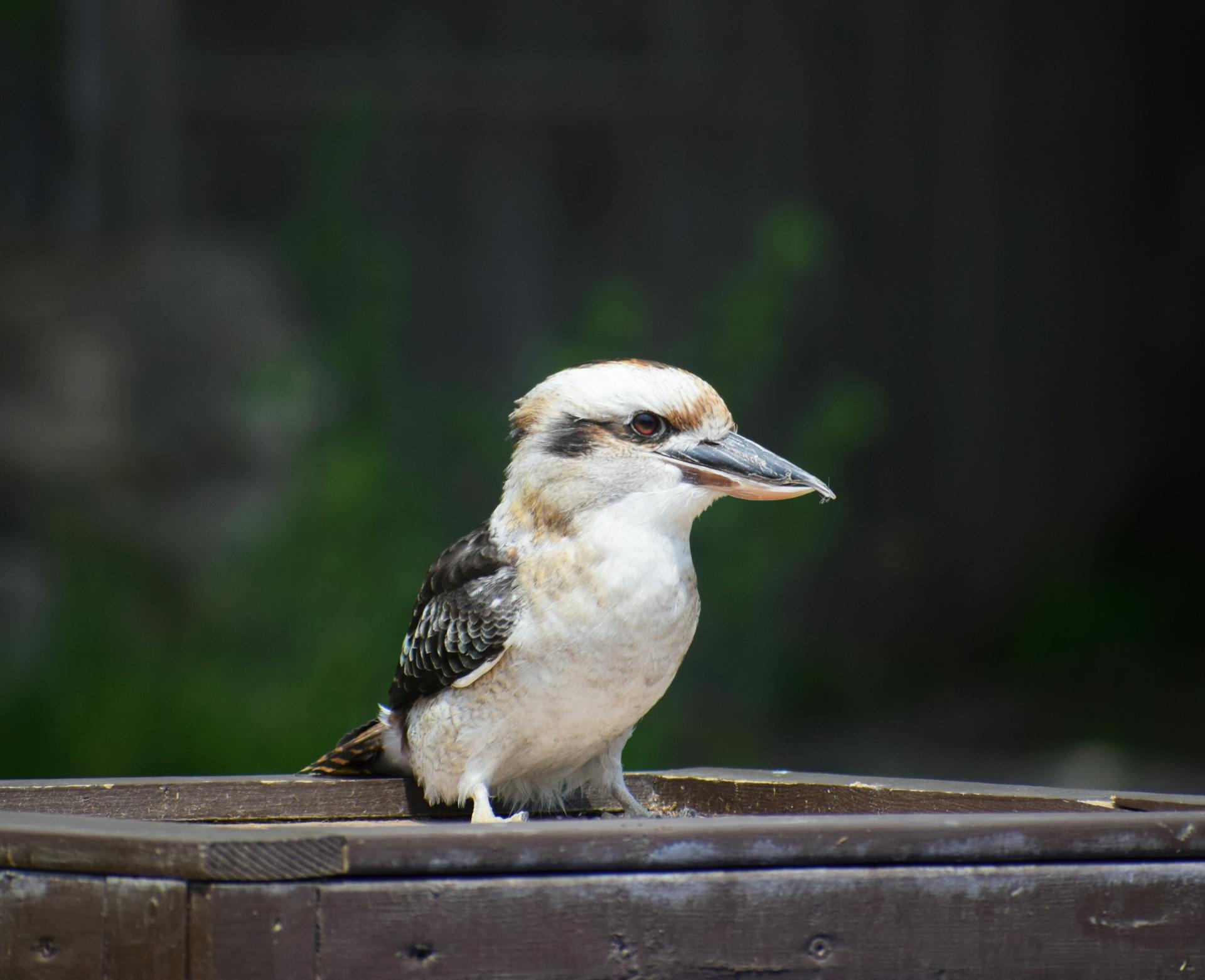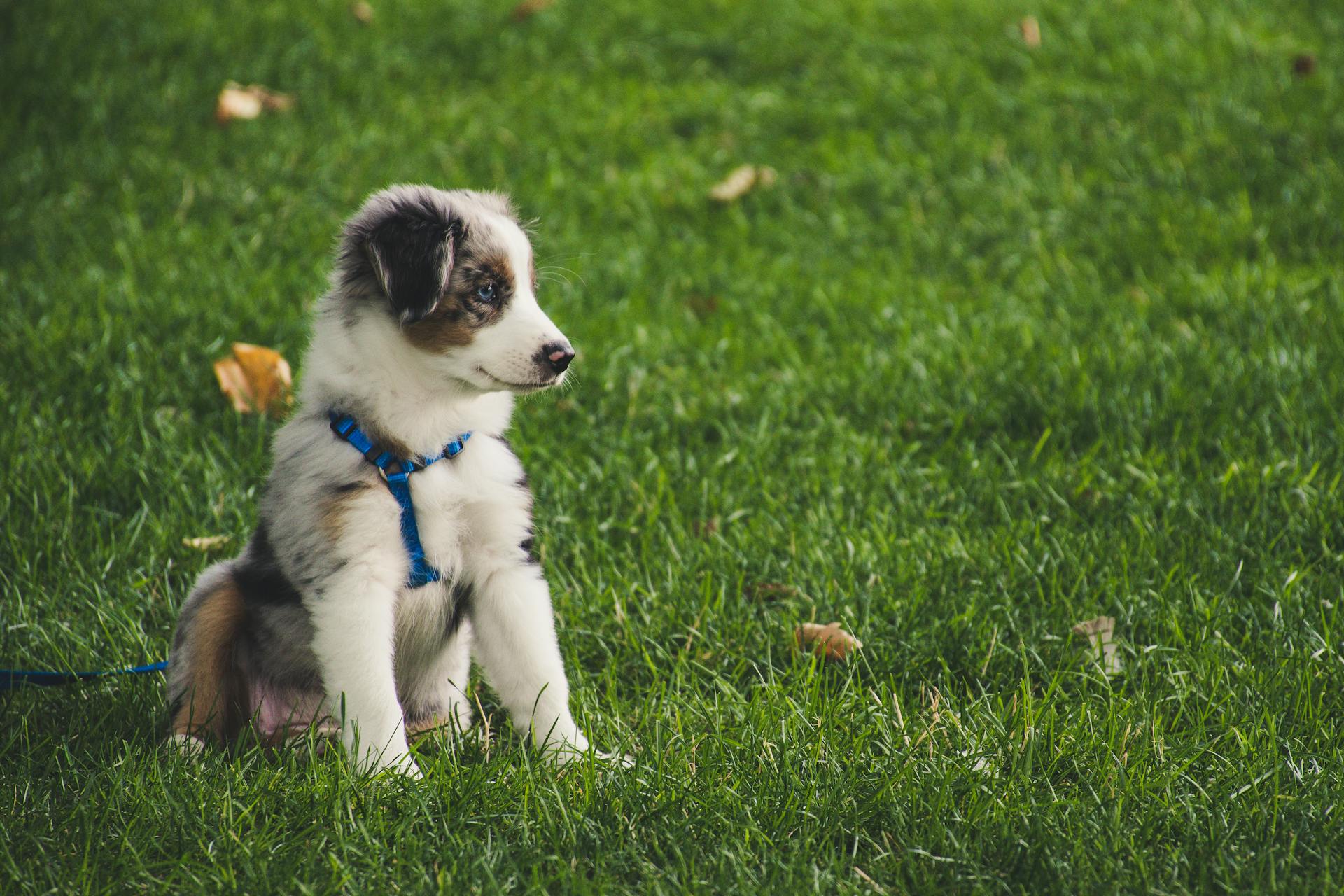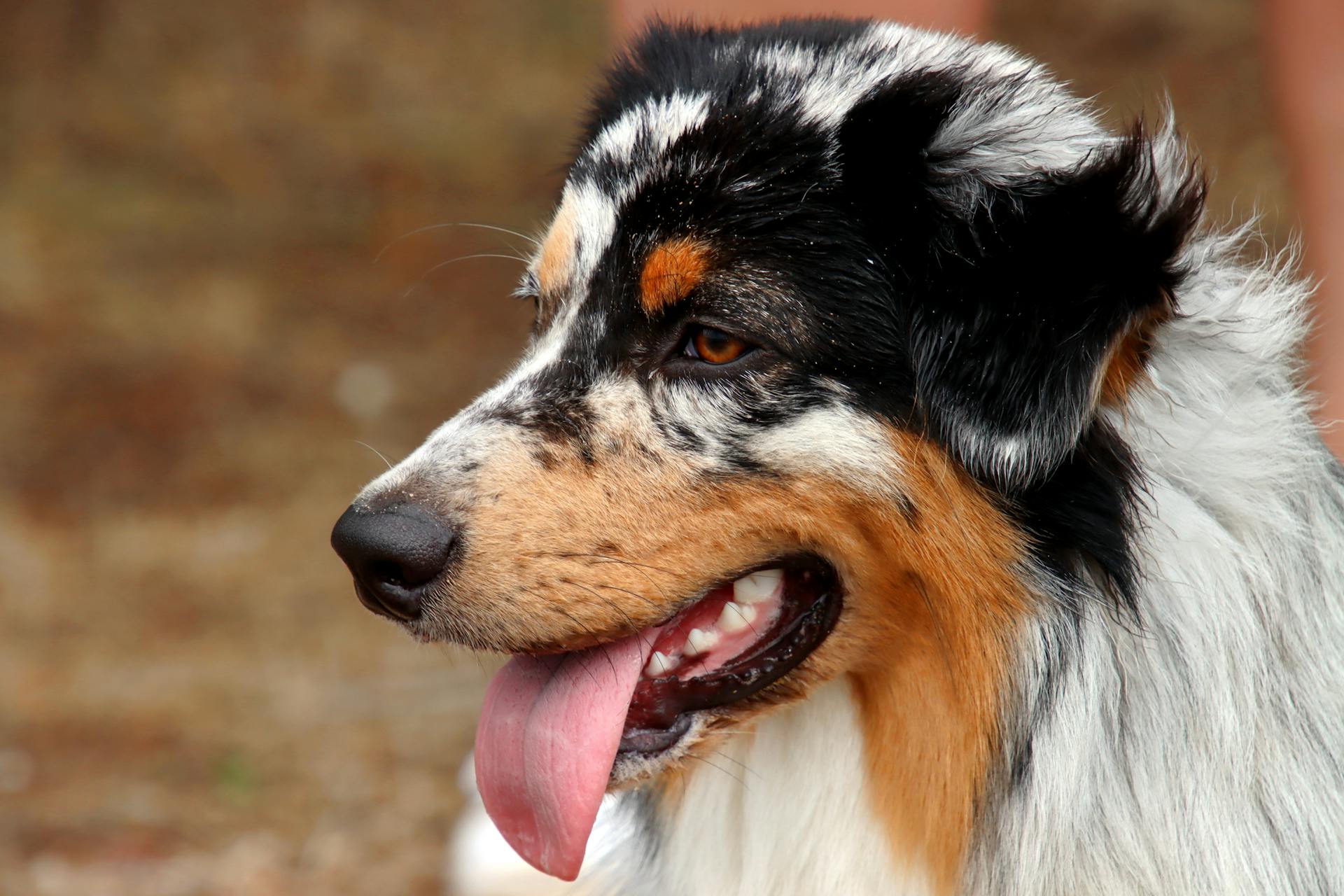
Australian Shepherds and Blue Heelers are both popular breeds, but their mix can make for a unique and energetic puppy. This breed mix is known for being highly intelligent and trainable.
They require regular exercise to stay happy and healthy, which can be a challenge for busy owners. Australian Shepherd Blue Heeler puppies need at least an hour of physical activity daily.
Their high energy levels also mean they need plenty of mental stimulation to prevent boredom and destructive behavior. Engage them in activities that challenge their minds, such as puzzle toys and obedience training.
Their short coats require minimal grooming, but they do shed heavily during shedding season. This can be a drawback for owners who prefer low-maintenance pets.
Parent Breeds
The Australian Shepherd and Blue Heeler are the parent breeds of the Australian Shepherd Blue Heeler cross. The Australian Shepherd is an American dog breed that originated from herding dogs in Spain, Australia, and New Zealand.
The Blue Heeler, on the other hand, is an Australian herding dog used for droving cattle on harsh terrains. It was developed in the 1800s by pastoralist Thomas Simpson Hall, and the first breed standard was established by Robert Kaleski.
Australian Cattle Dog
The Australian Cattle Dog, also known as the Blue Heeler, is a popular breed in America, ranking 55th in popularity in 2020.
This breed measures between 17 and 20 inches in height.
They weigh between 35 to 50 pounds from paw to shoulder. Their dense coats are short to medium in length and easy to care for.
The Australian Cattle Dog has a unique appearance, with black, gray, and white patches that give them a blue appearance, despite not being technically blue in color.
Their ancestry is a mix of Scottish Collies, Smithfield dogs, and dingoes, making them a fantastic herder and loyal companion.
Explore further: Australian Cattle Dog vs Blue Heeler
Crossbreed Origin
The Australian Shepherd Blue Heeler cross is a relatively rare breed, and understanding its origin is key to appreciating its unique characteristics.
The Australian Shepherd is an American dog breed that originated from herding dogs in Spain, Australia, and New Zealand.
This breed has a long history of being a working dog, used for herding cattle, and its friendly temperament makes it a popular choice as a family pet.
The Australian Cattle Dog, also known as the Blue Heeler or Red Heeler, is an Australian herding dog developed in the 1800s by pastoralist Thomas Simpson Hall.
Experts believe that the Blue Heeler originated from several dog breeds, including blue-speckled Highland Collies imported from England and wild dingoes.
The Blue Heeler was first bred to herd cattle on harsh terrains, and its breed standard was established by Robert Kaleski.
The exact origin of the Texas Heeler is unknown, but it is believed to be the product of human curiosity and the need to fix some undesirable traits of both parent breeds.
If this caught your attention, see: Australian Cattle Dog Heeler Mix
Highlights
The Texas Heeler is a medium-sized dog, making it a great fit for families with smaller living spaces. They require moderate exercise, but their energetic nature means they'll keep up with you on long walks in the countryside.
Both parent breeds, the Blue Heeler and Australian Shepherd, are known for their loyalty, and this trait is inherited by the Texas Heeler. They make devoted friends for life, as long as they receive the right care and attention.
The Texas Heeler can be challenging and pushy at times, but with the right environment and training, they can thrive. They're not for every owner, but for those who can provide the right home, they'll reward you with a loving companion.
Explore further: Texas Heeler Pups
Temperament and Intelligence
The Australian Shepherd Blue Heeler puppy is naturally brilliant and active, bred to be working dogs and herd animals of all sorts. They have a high level of intelligence, which makes them relatively easy to train with positive reinforcement.
Their herding instincts are strong, and they may attempt to herd children, cats, and cars, so it's essential to provide them with plenty of mental stimulation and training. They require regular interaction and exercise to prevent boredom and destructive behavior.
One of the best things about this breed is their loyalty and loving nature - they'll stick to you like glue and shower you in doggy kisses. They'll love every member of the family, from granny to grandchild.
However, they can be a bit aloof with strangers, and their herding instincts may lead them to nip at their heels in an attempt to herd them. This can be avoided with early training and socialization from a young age.
Curious to learn more? Check out: Blue Heeler Herding Cattle
As a watchdog, the Australian Shepherd Blue Heeler mix is excellent, and they'll bark to let you know if something is wrong. They're naturally cautious around unknown people, which makes them a great fit for families who value their independence.
Their high energy levels mean they need plenty of physical and mental activity, so be prepared to provide them with a lot of exercise and stimulation. With the right training and care, they'll be a loyal, devoted, and affectionate companion for years to come.
Size and Appearance
The Australian Shepherd Blue Heeler mix is a medium-sized dog, typically reaching a height of 17-23 inches and weighing 35-60 pounds.
Both Blue Heeler and Aussie parents are medium-sized dogs, with the Blue Heeler reaching a height of 17-20 inches and weighing 35-50 pounds.
The Texas Heeler can range from seventeen to twenty inches tall and weigh thirty to fifty pounds.
Their height can vary depending on the size of their purebred ancestors, with some mixes reaching up to 23 inches tall.
The ears of the Texas Heeler can differ, but it's more common for them to have upright, forward-facing ears.
Coat colors can be black, blue merle, or blue ticked with accents of white or tan, and coat length can differ between short and straight or medium length wavy or straight.
Both double coat types have a weather-resistant topcoat with a dense undercoat that is 'blown' twice a year with the possibility of some shedding continually.
Unfortunately, there's no one "right" look for a Texas Heeler, as their appearance can vary due to mixed genetics and a lack of breed standards.
On a similar theme: Blue Heeler vs Texas Heeler
Coat & Colors
The Australian Shepherd Blue Heeler puppy's coat is a unique blend of its parent breeds. Their coat will be patchy, spotty, and speckled.
One of the most distinctive features of the Australian Shepherd Blue Heeler is its double coat, designed to keep it warm in cooler temperatures.
Their coat will likely be black, white, and gray in color, thanks to the Blue Heeler parent. However, they may also inherit the red and brown colored genes from their parents, which can pop up in smaller amounts.
Their coat will be denser than the Australian Shepherd's but shorter, requiring less grooming.
Training
The Australian Shepherd Blue Heeler is an intelligent breed that takes well to training. They are eager to please and quickly understand what you're asking them.
To start training, it's essential to socialize your puppy with other dogs, animals, and unfamiliar humans. This will help them grow into a confident and well-mannered pup.
Positive reinforcement training is key, so make sure to use treats, cuddle sessions, and petting to encourage good behavior. Avoid yelling or physical punishment, as this can do harm.
These dogs are highly intelligent, so they'll pick up training quickly. However, be prepared to do multiple training sessions a day, with each session lasting around 15 minutes.
To keep their mind occupied and prevent destructive behaviors, try using puzzle toys and canine sports. A combination of these activities will provide your dog with the variety they need.
One thing to keep in mind is that Australian Shepherd Blue Heelers can be stubborn at times. Be patient and consistent, and remember to reward good behavior with treats and praise.
Curious to learn more? Check out: Blue Heeler Behavior Problems
Here are some general tips to keep in mind when training your Australian Shepherd Blue Heeler:
- Start training sessions at a young age.
- Use positive reinforcement techniques.
- Be consistent and patient.
- Provide mental stimulation through puzzle toys and canine sports.
By following these tips and being dedicated to training, you'll be well on your way to raising a well-behaved and loyal Australian Shepherd Blue Heeler.
Health and Care
The Australian Shepherd Blue Heeler puppy is a robust breed, but like all dogs, it's not immune to health issues. Both parent breeds, the Blue Heeler and Australian Shepherd, are prone to hip and elbow dysplasia, which can lead to pain and paralysis in later life.
Regular vet visits are crucial to catching any potential health problems early on. A BAER test can help identify deafness, which can be inherited from the Cattle Dog parent.
Some potential health issues to watch out for include hip dysplasia, elbow dysplasia, progressive retinal atrophy, cataracts, deafness, portosystemic shunt, luxating patellas, epilepsy, and lymphosarcoma. These conditions aren't life-threatening if discovered on time, but they do require regular monitoring.
To ensure your puppy stays healthy, find a reputable breeder who conducts genetic testing on their dogs. This can help identify potential health issues before they become a problem.
For your interest: Blue Heeler Health Issues
Health
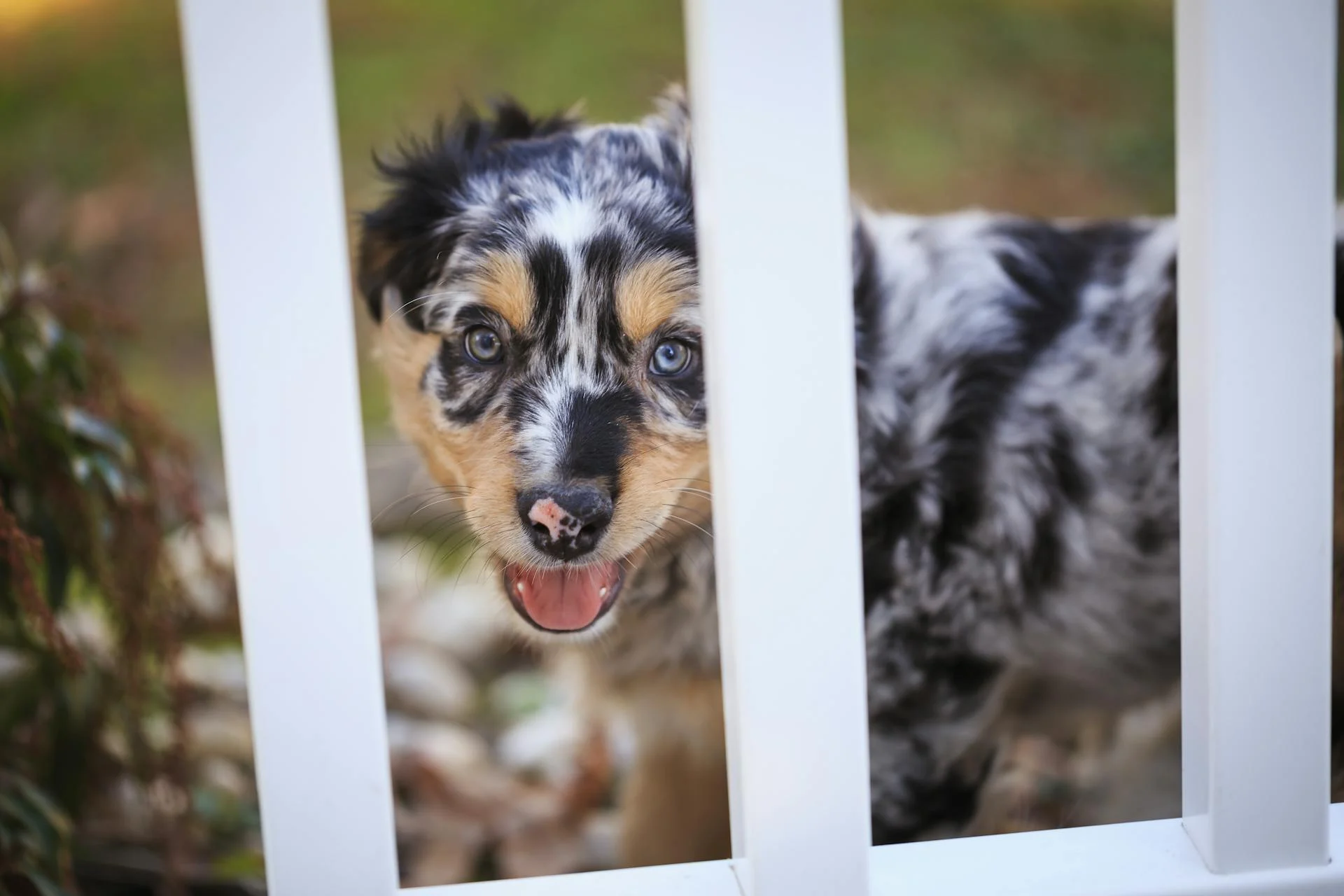
The Australian Heeler is a relatively healthy dog, but like all breeds, they can be prone to certain health issues. Their lifespan is typically 12 to 16 years.
Hip and Elbow Dysplasia are common conditions in this breed, caused by the joints not lining up correctly, leading to wear and tear. This can eventually cause arthritis-like signs before the dog is 4 years old.
Eye conditions are also a concern, with Progressive Retinal Atrophy and Collie Eye being possible inherited conditions. These conditions can cause blindness and are often genetic, not tied to aging.
Deafness is another potential issue, especially if the dog has a merle coat. This is tested by a BAER test, and any dog suffering from deafness should not be bred from.
Regular vet visits are crucial to catch any potential health problems early on. Most of these conditions aren't life-threatening if discovered on time.
Here are some potential health issues to be aware of:
- Hip dysplasia and elbow dysplasia
- Progressive retinal atrophy (PRA)
- Deafness
- Ear infections
- Skin irritation
By knowing what to look out for, you can provide the best possible care for your Australian Heeler and enjoy many happy years together.
Pet Care
The Australian Heeler's grooming needs are relatively low maintenance, but still require regular attention. You'll need to brush their coat 2-3 times a week to keep them looking healthy and remove dirt.
Their large ears will need cleaning every week, and a bath every 6-8 weeks will keep them feeling fresh. Regular brushing will also help prevent skin irritation from excessive bathing.
If your dog has inherited the short fur of its Blue Heeler parent, you can get away with brushing every couple of weeks. However, if they've inherited the slightly longer coat of their Australian Shepherd parent, you'll need to brush at least once a week.
During shedding season, which can occur twice a year, you'll need to increase grooming to remove dead hair. Regular brushing will help prevent loose hairs from spreading all over your home.
Here are some additional grooming tasks to keep in mind:
- Check your dog's ears regularly
- Brush their teeth regularly
- Trim their nails (if necessary)
Remember, grooming is an essential part of caring for your Australian Heeler. Regular attention will help keep their coat looking healthy and prevent skin issues.
Finding and Owning
Finding an Australian Shepherd Blue Heeler puppy can be a challenge. Few breeders specialize in this unique breed, making it difficult to find a reputable breeder.
Be prepared for a wait, as most breeders don't produce regular puppies of this crossbreed. This scarcity can make the search even more frustrating.
If you do manage to find a breeder, make sure to ask plenty of questions and do your research to ensure you're getting a healthy puppy.
Finding Them Is Difficult
Finding an Australian Shepherd Blue Heeler can be a challenge. Few breeders specialize in this unique breed, making it hard to find a reliable source.
If you're lucky, you might stumble upon a breeder who occasionally produces puppies, but don't count on it. Most breeders focus on more popular breeds, leaving the Australian Shepherd Blue Heeler in the shadows.
Keep in mind that even if you do find a breeder, they might not have a litter available, or the waitlist might be years long.
Is This the Right Dog?
The Blue Heeler Australian Shepherd mix is a great dog for almost anyone. He is friendly, loyal, and smart, inheriting only the best traits from both of his parent breeds.
This dog is suitable for both kids and other pets, something not many breeds can say for themselves. With proper training, you can even control their nipping at heels, which is the only potential issue with young children.
If you live in a small apartment, you might not be able to provide your pup with the physical activity he needs to stay happy. This dog requires regular exercise to thrive.
Despite the potential challenge of high activity levels, this is a well-rounded pup that makes an excellent herding dog and an astonishing family pet.
Owning Essentials
Having the right tools can make all the difference in finding what you're looking for. A good map can help you navigate unfamiliar territories.
A reliable compass is essential for orienting yourself in the wilderness. The article highlights the importance of a compass in navigation.
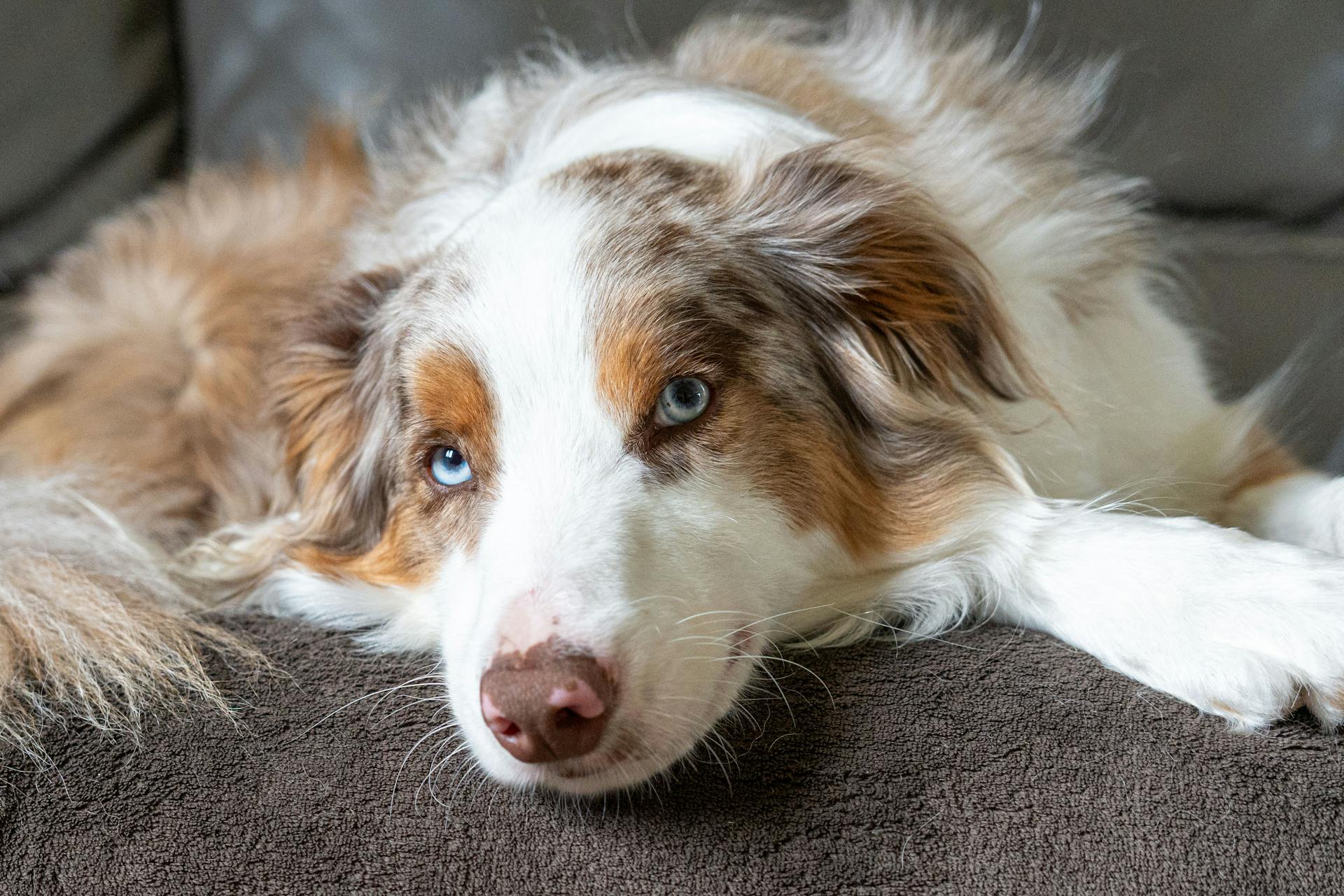
Knowing how to use a compass takes practice, but it's a valuable skill to have. The article section on navigation provides tips on how to use a compass effectively.
The right equipment can also make a big difference in finding what you're looking for. A good pair of binoculars can help you spot objects from a distance.
Being prepared is key to owning what you need. The article emphasizes the importance of being prepared when searching for something.
Puppies and Rescue
If you're looking to bring home an Australian Shepherd Blue Heeler puppy, you have a few options to consider.
Rescue organizations are a great place to start, as they often have a wide range of adoptable dogs, including breed mixes. They usually list adoptable dogs state by state and provide contact details for rescue representatives.
Finding a reputable breeder can be challenging, but it's worth the extra effort to ensure you're getting a healthy puppy. Due to the low demand, prices can vary, but they're often not too expensive.
However, be wary of backyard breeders who may charge lower prices but often skimp on proper vet care and genetic testing.
Puppies
Australian Shepherd Blue Heeler Puppies are a rare breed, which means they can be hard to find.
If you manage to find one, they typically cost less than other breeds due to low demand.
However, the price can vary quite a bit because breeders don't always have anyone to compare their prices to.
Purchasing from a backyard breeder will likely cost less, but we don't recommend it because the puppies often don't receive proper vet care or genetic testing.
These dogs often require more work to breed due to their larger size and hyperactivity.
You might enjoy: How Much Do Blue Heeler Puppies Cost
Meet Chevy, 10 Weeks Old
Meet Chevy, 10 weeks old. He's a ball of energy and already knows how to play fetch.
Chevy's owner, Sarah, adopted him from a local rescue shelter. She's noticed that he's still getting used to wearing a collar and leash.
At this age, puppies like Chevy are still learning to navigate their surroundings. They're naturally curious and love to explore.
Chevy's already showing signs of being a friendly and outgoing pup. He's made friends with the other dogs in the neighborhood.
Puppies at this age need plenty of socialization to help them become confident adults. Chevy's getting plenty of attention from his owner and other people he meets.
Chevy's still getting used to eating solid food and needs to be fed several times a day. His owner is making sure to provide him with a balanced diet.
Rescue & Shelters
If you're considering rescuing a puppy, you'll have a higher chance of finding an Australian Heeler or mix by checking dedicated breed rescue websites.
These websites not only help you find a new furry friend but also provide a safe haven for dogs in need.
You can start by visiting the Australian Cattle Dog Rescue website, which lists adoptable dogs state by state, along with contact details for rescue representatives.
Be sure to check out the Australian Shepherd Rescue website as well, as it also lists adoptable dogs and provides valuable resources.
Good luck in your search for the perfect pup!
General Information
The Blue Heeler Australian Shepherd Mix is a unique and energetic breed. They typically stand between 17 and 23 inches tall.
Their weight can vary, but they usually fall within the 35-65 pound range. This mix is known for its medium-length coat, which requires regular grooming to prevent matting and tangling.
The coat color of the Blue Heeler Australian Shepherd Mix can be merle, ticked, bicolor, or tricolor. Their intelligence and strong herding tendencies make them a great breed for active families.
If you're considering bringing a Blue Heeler Australian Shepherd Mix into your home, it's essential to remember that they are loyal and playful, but may try to herd small children. With proper training and socialization, they can get along well with other pets.
This breed has an average lifespan of 12-16 years, making them a long-term companion. With the right care and attention, they can thrive in a variety of living situations.
Broaden your view: Origin of Blue Heeler Cattle Dog
Frequently Asked Questions
Is Blue Heeler Australian Shepherd mix a good dog?
Blue Heeler Australian Shepherd mixes make loyal and loving companions, but their strong protective instincts require careful training and socialization. With proper care, they can thrive as devoted family pets and effective guardians
Are Australian Blue Heelers good family dogs?
Australian Blue Heelers are known for their friendly nature, making them a great fit for families. They are a solid choice for families with children due to their gentle and affectionate personalities.
How big do Australian Cattle Dog Blue Heeler mixes get?
Australian Cattle Dog Blue Heeler mixes typically stand 17-20 inches tall and weigh 35-50 pounds, depending on their sex and lineage. Their compact size makes them a great fit for families and working roles alike.
Why is my Australian Shepherd short-haired?
Australian Shepherds can have short hair due to natural variations within the breed. This variation is a normal characteristic of some individuals within the breed.
Sources
- https://www.caninejournal.com/australian-shepherd-blue-heeler-mix/
- https://www.hepper.com/australian-shepherd-blue-heeler-mix/
- https://breedatlas.net/blue-heeler-australian-shepherd-mix/
- https://www.practicalpaw.com/blue-heeler-australian-shepherd-mix/
- https://www.australian-shepherd-lovers.com/our-beautiful-aussieheeler-mix-puppychevy-10-weeks-old.html
Featured Images: pexels.com
